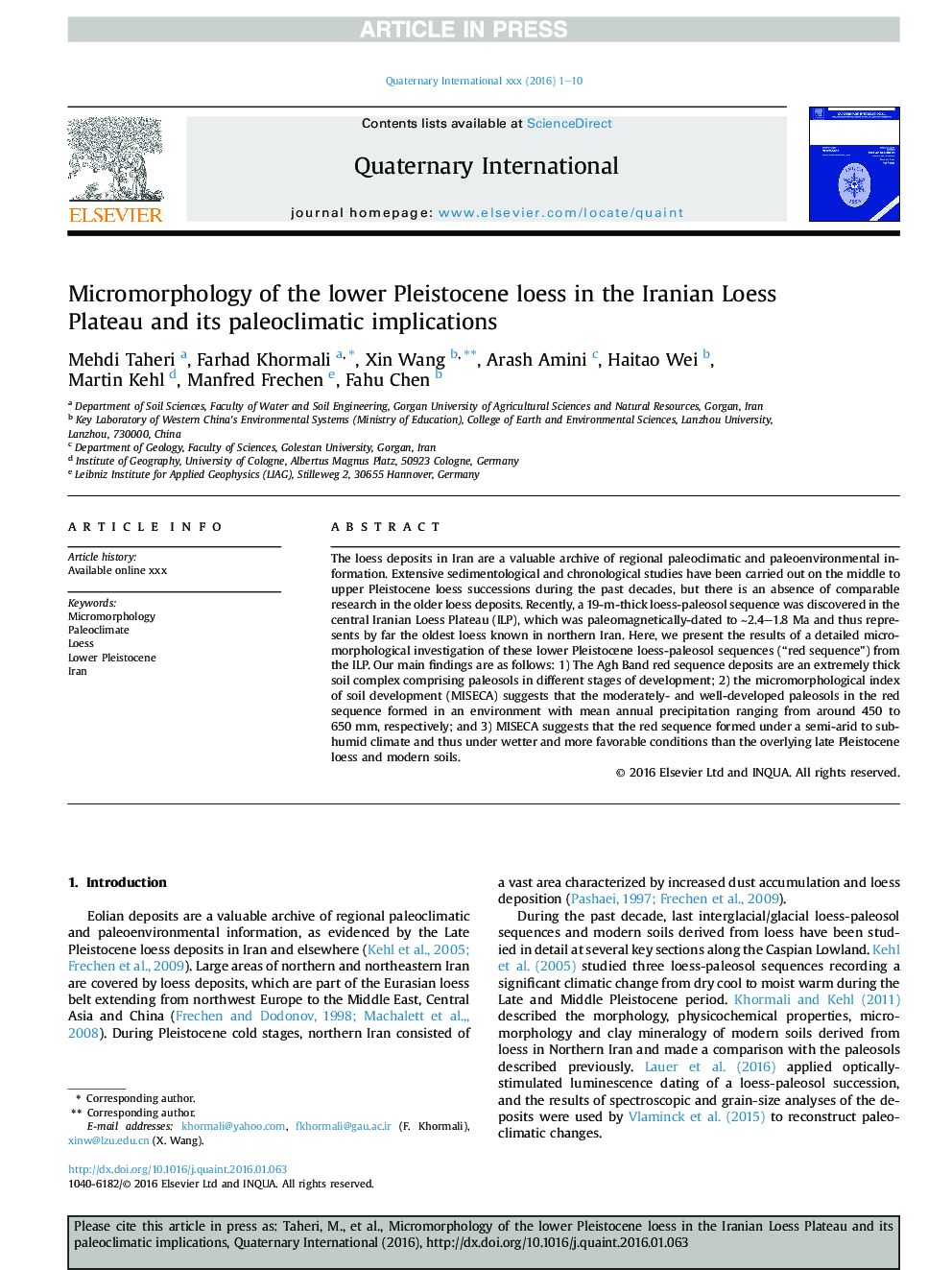| کد مقاله | کد نشریه | سال انتشار | مقاله انگلیسی | نسخه تمام متن |
|---|---|---|---|---|
| 5113729 | 1377948 | 2017 | 10 صفحه PDF | دانلود رایگان |
عنوان انگلیسی مقاله ISI
Micromorphology of the lower Pleistocene loess in the Iranian Loess Plateau and its paleoclimatic implications
ترجمه فارسی عنوان
میکرومورفولوژی پایین تر پلیست اتل لس در صفحات لس ایران و پیامدهای پائولو کلیماتیک آن
دانلود مقاله + سفارش ترجمه
دانلود مقاله ISI انگلیسی
رایگان برای ایرانیان
کلمات کلیدی
موضوعات مرتبط
مهندسی و علوم پایه
علوم زمین و سیارات
زمین شناسی
چکیده انگلیسی
The loess deposits in Iran are a valuable archive of regional paleoclimatic and paleoenvironmental information. Extensive sedimentological and chronological studies have been carried out on the middle to upper Pleistocene loess successions during the past decades, but there is an absence of comparable research in the older loess deposits. Recently, a 19-m-thick loess-paleosol sequence was discovered in the central Iranian Loess Plateau (ILP), which was paleomagnetically-dated to â¼2.4-1.8 Ma and thus represents by far the oldest loess known in northern Iran. Here, we present the results of a detailed micromorphological investigation of these lower Pleistocene loess-paleosol sequences (“red sequence”) from the ILP. Our main findings are as follows: 1) The Agh Band red sequence deposits are an extremely thick soil complex comprising paleosols in different stages of development; 2) the micromorphological index of soil development (MISECA) suggests that the moderately- and well-developed paleosols in the red sequence formed in an environment with mean annual precipitation ranging from around 450 to 650Â mm, respectively; and 3) MISECA suggests that the red sequence formed under a semi-arid to sub-humid climate and thus under wetter and more favorable conditions than the overlying late Pleistocene loess and modern soils.
ناشر
Database: Elsevier - ScienceDirect (ساینس دایرکت)
Journal: Quaternary International - Volume 429, Part B, 30 January 2017, Pages 31-40
Journal: Quaternary International - Volume 429, Part B, 30 January 2017, Pages 31-40
نویسندگان
Mehdi Taheri, Farhad Khormali, Xin Wang, Arash Amini, Haitao Wei, Martin Kehl, Manfred Frechen, Fahu Chen,
